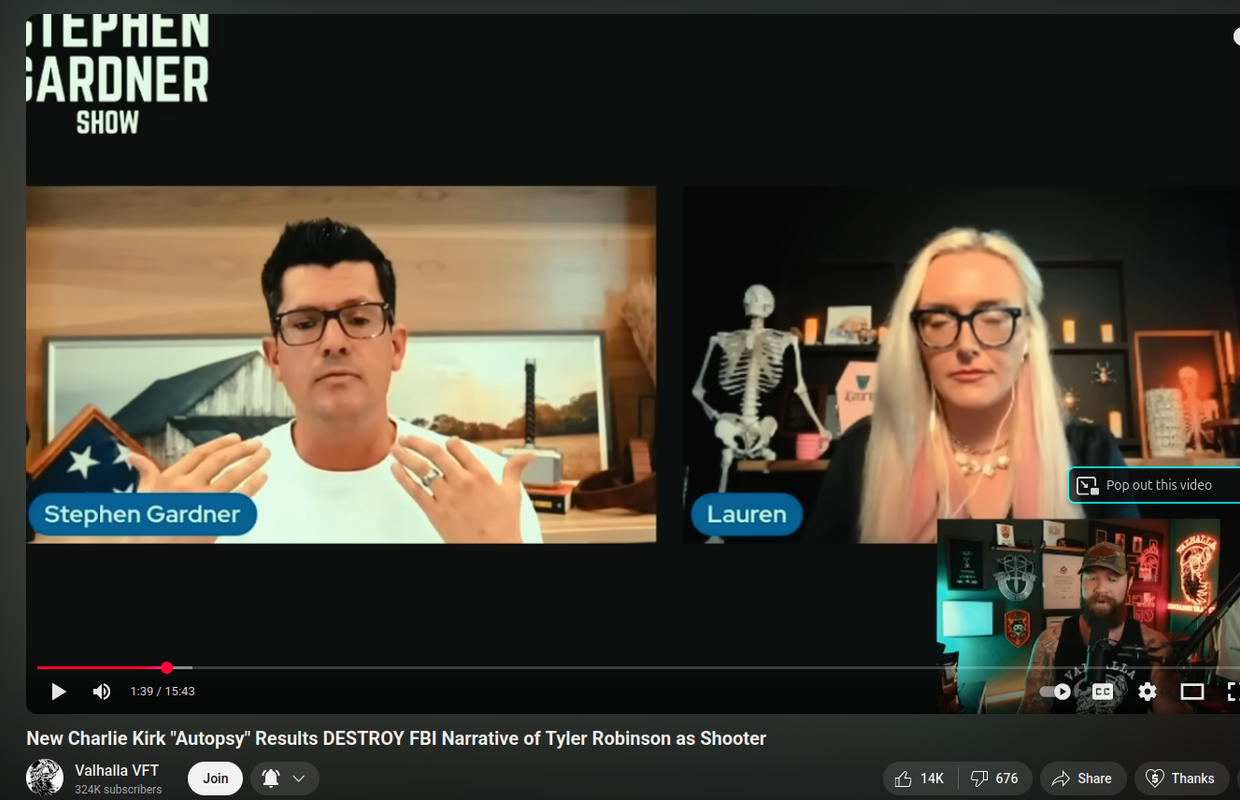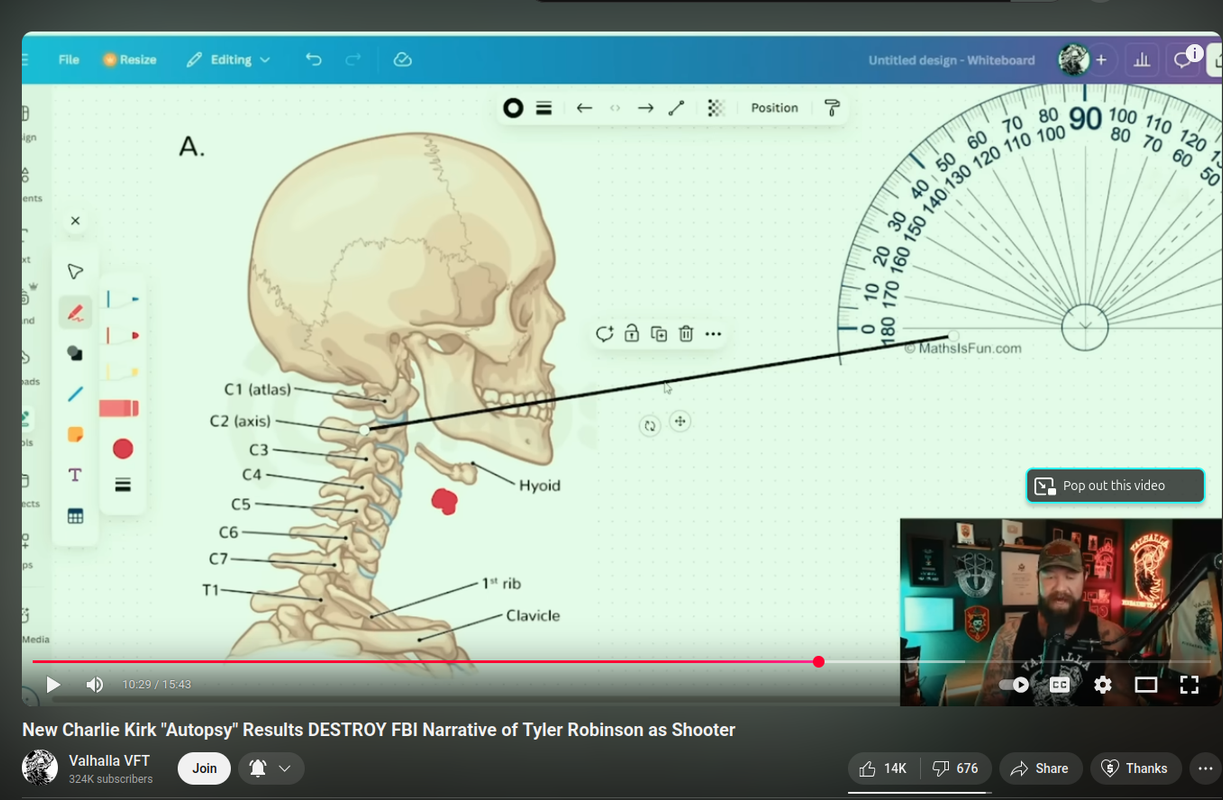Charlie Kirk was shot and killed, and new details from what’s being reported as autopsy information are raising serious questions among firearms and medical experts.
According to Steven Gardner, who claims access to autopsy details, a 30-06 round struck Kirk in the neck, hit the C2 vertebra, traveled downward fracturing multiple vertebrae, and ended up just below the skin without exiting the body.
Multiple firearms experts, including former Green Beret Valhalla VFT, are questioning the autopsy findings. They say the 30-06 has excellent penetration capabilities and typically creates pass-through wounds on human targets How Deadly Is a .30-06? — Silent Armament Forge. The idea that such a powerful round would enter the neck, tumble through vertebrae, and stop just under the skin strikes them as highly unusual.
Former Special Forces medic “The Sticky Green Beret” raised another concern during an interview - the apparent lack of blood on anyone at the scene. When treating neck wounds, trained security personnel should immediately apply direct pressure to control bleeding, which means placing hands directly into the wound.
Standard first aid protocol requires applying continuous direct pressure with both hands on bleeding wounds until medical help arrives.
The experts point out that trained security personnel, especially those with Israeli military backgrounds, would be extensively trained in triage and immediate trauma response CPR. The first priority with a neck gunshot wound is controlling hemorrhage through direct pressure, often requiring responders to place their hands directly in the wound.
In pictures we can see blood on Charlie's body - but there appears to be little on the security team themselves.
Neck trauma typically results in significant blood loss, and bleeding should be controlled by direct pressure while someone performs chest compressions if there’s no pulse.
Another odd detail: the security team’s behavior after the shooting. Valhalla VFT noted that trained security personnel should immediately be scanning for additional threats, taking cover, or moving the victim to safety. Instead, they remained in the open behind what appeared to be a plastic barrier.




